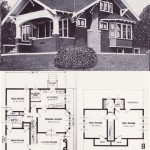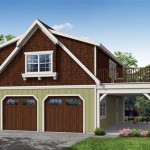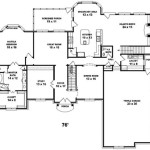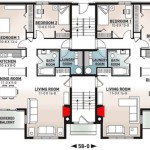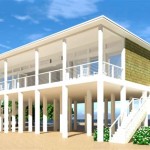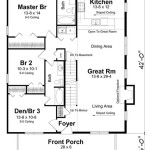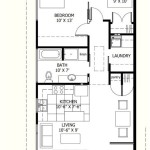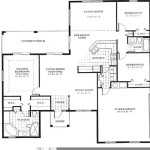Log Cabin Designs and Floor Plans: A Comprehensive Guide
Log cabins evoke a sense of rustic charm and connection to nature, appealing to individuals seeking a tranquil retreat, a permanent residence, or a vacation getaway. Their enduring popularity stems from the inherent beauty of natural wood, their energy efficiency, and the versatility in design. This article explores various log cabin designs and floor plans, providing insights into factors that influence selection and customization.
Understanding the Essentials of Log Cabin Design
The fundamental principles of log cabin design revolve around the characteristics of the chosen logs, the building site, and the intended use of the cabin. Log species such as pine, cedar, and spruce each offer unique properties related to durability, insulation, and aesthetics. Pine, for example, is often more readily available and cost-effective, while cedar boasts superior resistance to decay and insects. Spruce provides excellent insulation properties.
Site considerations are equally crucial. The terrain, climate, and orientation of the property influence the cabin's footprint, foundation requirements, and window placement. A sloping lot, for instance, might necessitate a basement or raised foundation, while a colder climate demands greater insulation and strategic window placement to maximize solar gain. Prevailing wind direction should be considered when planning the location of doors and windows to minimize heat loss.
Finally, the intended use of the cabin dictates its size, layout, and features. A small hunting cabin will differ significantly from a family vacation home or a year-round residence. Considerations include the number of bedrooms and bathrooms, kitchen size, living area configuration, and the need for amenities such as a fireplace, porch, or deck.
Exploring Different Log Cabin Floor Plan Options
Log cabin floor plans are diverse, ranging from simple one-room layouts to sprawling multi-story designs. The choice depends on the owner's needs, budget, and aesthetic preferences. Several common floor plan types include the following:
The One-Room Cabin:
This is the most basic and economical option, suitable for individuals or couples seeking a small, rustic retreat. One-room cabins typically incorporate a combined living, sleeping, and cooking area, with a separate bathroom. Space-saving strategies, such as loft beds and multi-functional furniture, are often employed.The Two-Bedroom Cabin:
This design offers a greater degree of privacy and functionality, making it ideal for small families or those who regularly host guests. The master bedroom is typically larger, while the second bedroom can serve as a guest room or children's room. The living area is often separated from the bedrooms, providing a dedicated space for relaxation and entertainment.The Cabin with a Loft:
Lofts are a popular feature in log cabins, adding valuable square footage without significantly increasing the building's footprint. Lofts can be used as bedrooms, home offices, or recreational areas. They also enhance the visual appeal of the cabin, creating a sense of vertical space and openness. Access to the loft is typically provided by a staircase or ladder.The Multi-Story Cabin:
For larger families or those seeking ample living space, a two-story or multi-story log cabin may be the best option. These designs offer a substantial increase in square footage, allowing for multiple bedrooms, bathrooms, and living areas. They can also be customized with features such as basements, garages, and wrap-around porches. Multi-story cabins require careful planning to ensure structural integrity and accessibility.The Open Concept Cabin:
Open concept floor plans have become increasingly popular in recent years. These designs eliminate or minimize walls between the kitchen, living room, and dining area, creating a spacious and airy atmosphere. Open concept cabins are well-suited for entertaining and family gatherings. However, they can also present challenges in terms of noise control and privacy.Within each of these basic floor plan types, numerous variations and customizations are possible. The placement of windows and doors, the size and shape of rooms, and the addition of architectural details all contribute to the unique character of each cabin.
Key Considerations for Customizing Log Cabin Designs
Customizing a log cabin design allows homeowners to create a living space that perfectly suits their needs and preferences. Several key considerations should guide the customization process:
Energy Efficiency:
Log cabins are inherently energy-efficient due to the insulating properties of wood. However, further improvements can be made through careful design and construction. Proper sealing of log joints, the use of energy-efficient windows and doors, and the installation of adequate insulation in the roof and floor can significantly reduce energy consumption. Consider incorporating passive solar design principles, such as orienting the cabin to maximize sunlight exposure in winter and minimize it in summer.Accessibility:
Accessibility is an important consideration for individuals with mobility limitations or those planning to age in place. Features such as ramps, wider doorways, and roll-in showers can make the cabin more accessible. Single-story designs are generally more accessible than multi-story designs. Even if accessibility is not an immediate concern, incorporating these features can enhance the long-term usability of the cabin.Outdoor Living Spaces:
Log cabins often feature outdoor living spaces, such as porches, decks, and patios. These spaces provide opportunities to connect with nature and enjoy the surrounding environment. The size and design of outdoor living spaces should be carefully considered based on the intended use. A large, covered porch can serve as an outdoor dining area, while a smaller deck might be ideal for relaxing and enjoying the view. Consider the orientation of the outdoor space to maximize sunlight and views.Interior Design and Finishes:
The interior design and finishes of a log cabin can greatly enhance its aesthetic appeal and functionality. Natural materials, such as wood, stone, and leather, are often used to complement the rustic character of the cabin. The choice of colors, textures, and lighting fixtures can also contribute to the overall atmosphere of the space. Consider incorporating sustainable and eco-friendly materials whenever possible. The layout and design of the kitchen and bathrooms should be carefully planned to maximize efficiency and comfort.Budget:
The budget is a critical factor in any construction project, including log cabin design. It is essential to establish a realistic budget before beginning the design process and to stick to it as closely as possible. Costs can be controlled by choosing a simple floor plan, using readily available materials, and minimizing customizations. Obtaining multiple quotes from contractors and suppliers can help to ensure that the project stays within budget.By carefully considering these factors, homeowners can create a log cabin design that is both functional and aesthetically pleasing, providing a comfortable and inviting living space for years to come. The options are virtually limitless, allowing for a truly unique and personalized retreat.
Beyond the considerations mentioned, adherence to local building codes and regulations is paramount. These codes ensure the safety and structural integrity of the building and may dictate specific requirements related to foundation, framing, electrical, plumbing, and fire safety. Consultation with local building officials or a qualified architect is recommended to ensure compliance.
Furthermore, proper maintenance is essential to preserve the longevity and beauty of a log cabin. Regular inspections should be conducted to identify and address any signs of damage or deterioration. This includes checking for insect infestations, water damage, and structural issues. Prompt repairs can prevent minor problems from escalating into more costly and time-consuming repairs. Periodic staining or sealing of the logs can help to protect them from the elements and maintain their natural beauty. With proper care and maintenance, a log cabin can provide generations of enjoyment.

Log House Plans Google Search Home Cabin Homes

10 Bedroom Log Cabin Floor Plans Ideas House Home

Log Cabin Floor Plans Many To Choose From

Browse Floor Plans For Our Custom Log Cabin Homes House Home

Log Homes Of America Inc Home Plan Ideas

Log Cabin Home Floor Plans The Original Homes

Standout Log Cabin Plans Escape To An Earlier Gentler Time

Featured Floorplan The Adair Southland Log Homes

Log Home Floor Plans 1500 2400 Sq Ft Cascade Handcrafted Homes

Log Home And Cabin Floor Plans Custom Handcrafted Homes Us Europe

